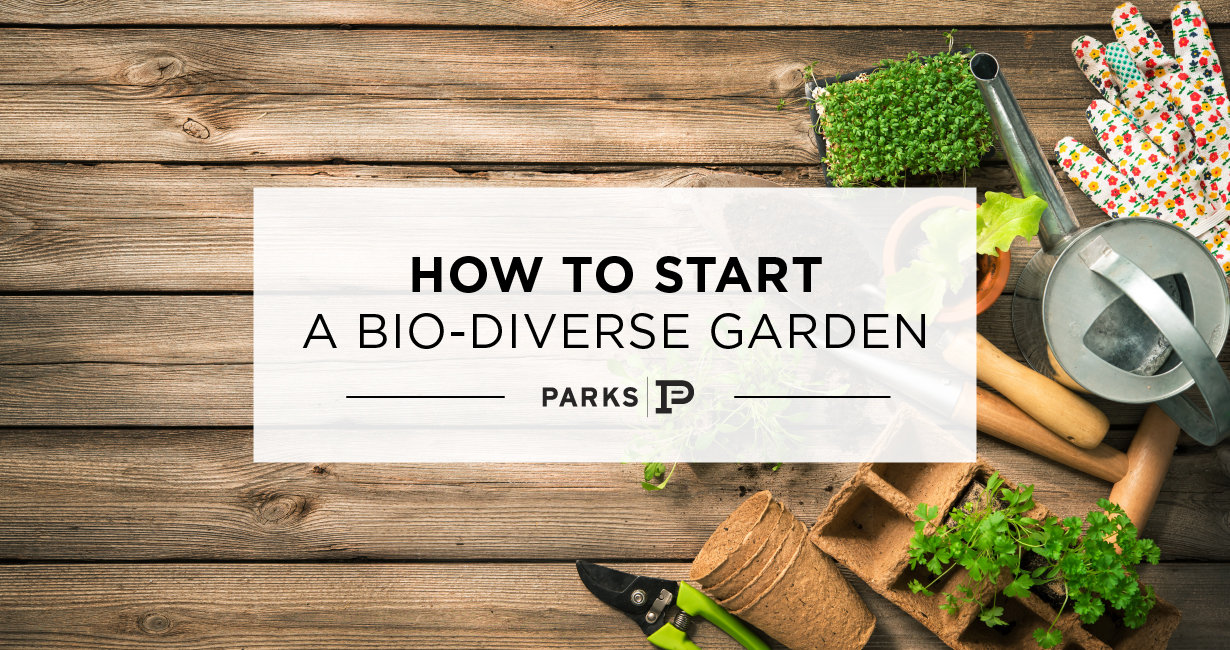How to Start a Bio-Diverse Garden
Posted by Jenni Barnett on Friday, April 10th, 2020 at 2:24pm.

When it comes to gardening, there are a few (if not many) end goals. There is the goal of planting gardens to be pretty for the landscaping aspect of it, as well as planting things to eat. Then there is planting to create a diverse, local habitat. That last one, while maybe newer in gardening trends, is one that is truly taking gardening back to its roots.
What exactly is bio-diverse gardening? It is essentially nature conservation in your own backyard. It means intentionally planting and creating a habitat for all our local small creatures to come find a home in. Some call it a “productive” garden. It may sound like a daunting task, but surprisingly, there are many simple things you can do to make your garden more bio-diverse in no time. Here's how to get started:
Only Native Plants
A main rule of thumb for a bio-diverse garden is to only plant native plants to your area. If you think about it, this makes sense because you want to have your garden invite native wildlife, as well as succeed in your local conditions. Therefore, planting completely non-native plants wouldn’t help you with your goal of a productive, and wildlife inviting garden. PlantNative and Native Plant Finder can help you pick the right plants for your area.
Plan for the More Permanent Plants
As with any garden, we hope your bio-diverse garden will be around for a long time to come. With that in mind, it’s important to plan for trees, hedges, and shrubs first. Plant in places with enough room to grow, and think about how they will provide shade and a barrier to the wind for the rest of your garden. The National Gardening Association gives a few things to think about when planting trees near gardens.
Plan for Blooms Year Round
Planning for something to be in bloom throughout all the seasons not only gives a nice look (and smell!) to your garden all year long, but will help attract different pollinators and creatures throughout the year. When researching native plants, it’s not much more research to make sure you have plants that bloom throughout the year, so be sure to not skip that step!
Go Wild
Plant wildflowers under your trees! Not only is the look of wildflowers refreshing, but it gives frogs, worms and other small creatures a safe place to hang it in. Right before it starts to get chilly, mow and compost.
Stack Those Sticks
By stacking sticks, twigs, and logs around the edge of your garden and under shrubs - you’re not only giving little critters a place to live in - but you’re also helping form their environment! Invertebrates love humidity, and by stacking earth, you are creating small, humid environments ideal for them.
Tiny Tunnels
It might seem silly, but by digging small, “corridors” connecting different parts of your garden, you’re helping move critters in and throughout the garden. More movement and accessibility means more bio-diversity!
Feed the Birds
While people typically think of feeding birds as something separate from a true garden experience, consistently feeding birds is a way to increase the number of birds to visit your garden. The longer you do it, the more birds you’ll get! Just remembering to protect from the squirrels! (If a bird feeder isn’t your thing, do some research on how wild grasses can give off seed for birds).
Better for Butterflies
Butterflies are picky eaters, but there’s an upside to that! By planting food that butterflies do thrive off, you will welcome the butterfly population with open arms. The art and science of a “butterfly garden” is extensive, but to start, look for the types of plants that make the most sense. By choosing plants that are both butterfly-attracting plants like these, as well as on the native plant list, you’ll be off to a great start.
Avoid Chemicals
Avoiding all types of chemical fertilizer and pesticides is essential for a thriving habitat. You’ve put in too much work to harm the little critters you’ve invited! Protect that habitat!







